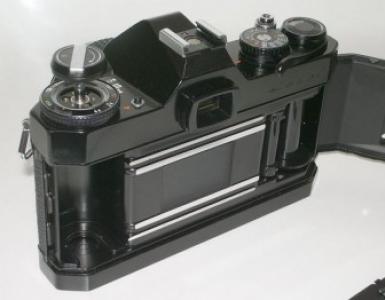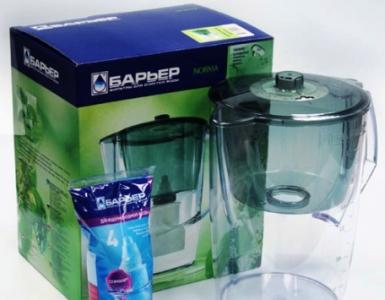How to make the most ventilation in the kitchen. Checking general house ventilation. Installing the Supply Valve
The ventilation of the kitchen in the living room is a necessary thing. Without ventilation, the smell comes from the kitchen to other living rooms - a bedroom, a nursery, a living room. Also, without proper drawing directly above the cooking surface, it is possible to settle fat deposits on all possible surfaces - walls, furniture, appliances, food.
Types of ventilation schemes
Before deciding which ventilation system is best to install in the kitchen, it is recommended to understand the circuits and their device. First of all, four types are distinguished:
- natural ventilation carries a fresh air supply and removes the internal air, using pressure levels in the kitchen;
- air supply supplies fresh air to the kitchen, while the old one pushes out;
- the exhaust ventilation is based on the principle of air exhaustion from the room, and the inflow of the new one is based on the moments of pressure decrease;
- the supply and exhaust system foresees air circulation and its exchange with the help of special equipment.
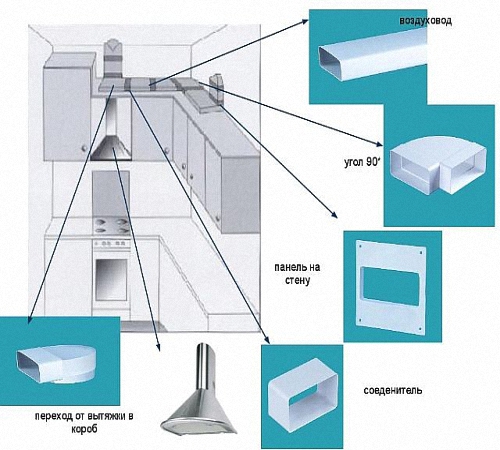
Natural scheme
In the beginning, let's look at the peculiarities of natural ventilation in the kitchen. Such a system was used in the construction of old houses. In such a scheme it is necessary to constantly check all the thrusts in ventilation ductsx.
It is possible to check such a system using two options:
1. Such ventilation, as a rule, is placed under the ceiling. If you attach a sheet of paper to the grid, then in the working condition of the system, it will stick to the surface.
2. Otherwise, you can ignite the match or the lighter. If the ventilation is working, then the flame will deviate to the grate.
In the event of a malfunction, the entire ventilation shaft must be cleaned of dirt and dust. Also worth paying attention to cleaning the duct. If, after cleaning the entire system, it remains not working, you need to contact a specialist. However, such ventilation has a lot of disadvantages, because it is not so effective in the work, and therefore it is necessary to install additional ventilation equipment for its addition.
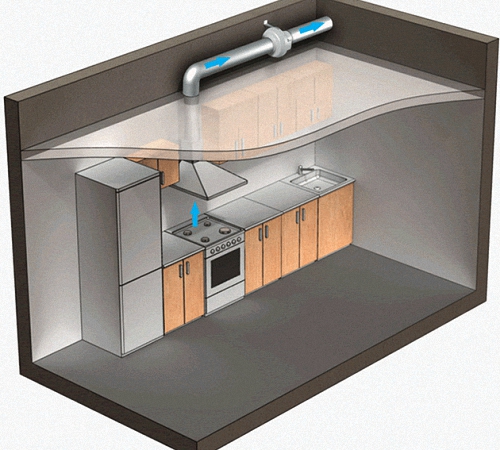
Exhaust circuit
Exhaust ventilation in the kitchen is one of the most popular systems for use in the kitchen. As a rule, it can be of two types:
- general - provides for the installation of a fan with a grate that performs air exchange;
- the local system is based on the installation of equipment, such as extractor hood, which helps draw all odors, vapors and gas by means of the fan function.
The most common and modern system is the installation of hoods in the kitchen. As a rule, it has a dome shape and directly connects to the ventilation system with the installed air duct.
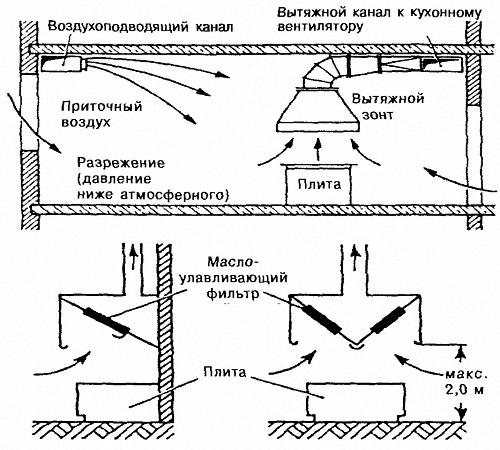
Supply ventilation scheme
This system is installed very rarely. Certainly, it is part of the supply and exhaust system, which allows more efficient air circulation in the kitchen. Such equipment is installed in the absence of drawing, but at the same time it is necessary to thoroughly check the operation of the traction system. Otherwise, such ventilation will not work, and the polluted air, together with fresh air, will be distributed to all rooms of the apartment or house. Most often, the auxiliary element is a fan.

It is worth noting that manufacturers offer modern models that are equipped with special sensors for measuring temperature and humidity in the kitchen. Therefore, their work is completely automatic. Such equipment is not from cheap options, it does not fully justify itself in the work.
Ventilation in the kitchen is divided into local and general exchange.
Let us consider in more detail the exhaust ventilation system, since it is the most popular in the installation, namely in the kitchen. First of all, let's pay attention to the advantages and disadvantages of such systems, and also describe the features of the equipment.
Local ventilation is the exhaust ventilation above the most problematic places in the kitchen. If we are talking about living quarters, then of course a steam convector and a brazier will rarely meet. Hence, local exhaust in a residential building is only necessary above the hob.
The easiest option is to use ventilation in the kitchen with a hood, as an element of household appliances, the necessary dimensions have already been chosen in advance, and the required air velocities are set. The minus of this system is a high noise level, despite the fact that it is expensive or cheap.
Another, more complex, but interesting option is the establishment of its own, unique hood. This is necessary if a unique design is being developed. In this case, the kitchen is mounted only a kitchen umbrella with inserts that catch fat. The fan itself can be located in the utility room or in the attic. With this concept, your hood will be - noiseless.
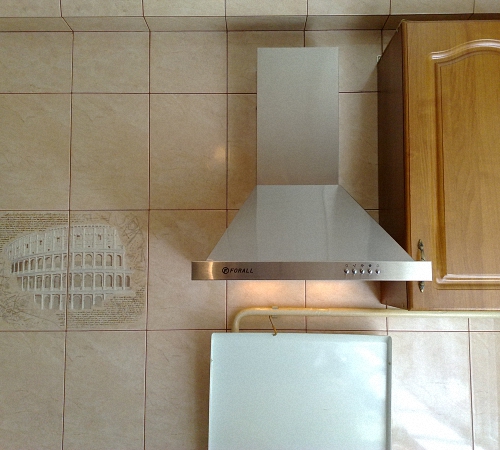
General ventilation is combined extract and input ventilation, which produces an air exchange in the whole of the kitchen. General ventilation is much less efficient than local ventilation, since it must provide a hood above the cutting area, dishwashing and directly above the food table. Inflow is calculated as compensation for the hood.
If your apartment is a small kitchen (5-7 square meters), it will be enough exhaust ventilation. Also it must be remembered that for the normal functioning of the ventilation of the kitchen with the gas stove, the necessary supply air supply is necessary. Otherwise, the fan will rotate, but do not overtake air masses. Where to get this influx? For kitchens of commercial purpose it is specially mounted, or taken from the dining room. In our case, it falls naturally through microventilating the windows. If this is not enough, you need to open the window.
Cooker hood
The hoods are of two types:
- the first is provided as an air purifier, a kind of filter;
- the second type is called the hood.
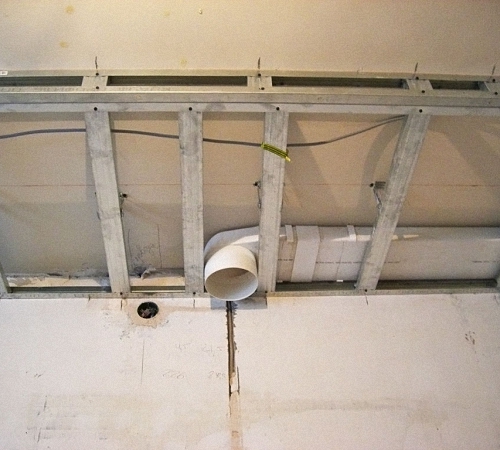
Regarding the first option, the installed filter draws in fresh air, while all the soot, dust and fat is trapped inside, and clean air is already entering the building. Another type is more effective from the point of constructing a ventilation system for the kitchen. After all, all the polluted air is removed from the building through the ventilation shaft. In many cases, the hood can not be installed over the stove after some reasons. They may be the wrong design of the kitchen, little space and so on. In this version, you will benefit from the household kitchen ventilation in a private house.
Many believe that the majority exhaust systems very huge and not comfortable, but in addition to the standard models such as the "plastic box that noisily operates" there are decorative fans. They only perform their direct duties - draw air from your kitchen, but also decorate it with the appearance - the front panels of such fans can be made of stainless steel or completely made of colored plastic or white with bright inserts.
How to choose a hood or a fan in the kitchen?
Suppose that you have defined the appearance. What's next? After all, as a rule, manufacturers offer fans or extracts of one kind with a whole list with unusual markings. Let's try to figure out what you really need.
The first thing to do is to understand what size (diameter) you need a fan. To do this, go to the kitchen and measure the size of the ventilation shaft. Usually it will be slightly larger than 10 12.5 or 15 centimeters. Round the digits to the smaller side and get the required diameter of your fan.

The next thing to do is to calculate the performance of the fan. To do this, we perform simple mathematical actions: first we multiply the breadth of the kitchen by the length and height. After that, you should subtract the volume, occupy the furniture. The resulting volume is multiplied first by 6 - this is the lower limit of the performance of the fan. Separately multiply the volume by 12 - this is the upper limit of the performance of the equipment. These boundaries are necessary in order to choose your own fan model for the kitchen. Keep in mind - if your kitchen is combined with a room, then you need to consider both rooms. Also it is worth remembering, the more powerful the device, the louder it will work.
We calculated that for an average 6-meter kitchen, a fan with a capacity of 120-180 cubic meters per hour is most likely to be suitable, and for a 10 meter-long kitchen it is 220-300 cubic meters per hour. And what if the size of the ventilation shaft is less than the size of the fan, has the required power? Pay attention to the fans with a prefix "turbo" in the title. Usually they are 30% more powerful than their models with the same diameter.
What you should pay attention to when choosing the equipment for ventilation for the kitchen
In addition to the size and performance there are a few more nuances for choosing a fan. If the owners are worried that uninvited guests can visit the ventilation shaft through the ventilation shaft, buy a fan equipped with a grid against insects. From the point of view of cleaning - the devices in which the front panel is removed will be convenient. Do not want the smell from the neighboring kitchen to get into your through the ventilation system, then you need to select equipment with a check valve to prevent the opposite traction.
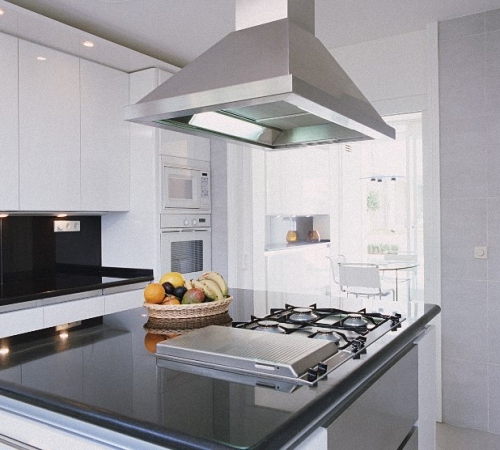
Ease of use is also not the last factor when choosing equipment. For example, ventilation in the kitchen with your own hands is mounted in the wall, and can be equipped with a cord switch - then you can turn it on and off with a cord. Another useful thing is the presence of a timer in the fan - built-in adjustable delay timer allows the fan to work for 2 - 30 minutes after stopping it with a switch.
Mount the fan
Before you make ventilation in the kitchen, check how clogged the air ducts observed in the building are. In case of a malfunction, contact the Housing and Utility Service or another authority to clean your shaft.
Instruction:
1. First, you need to establish the place where you will have the fan, before doing the hole in the wall of the desired diameter for the pipe.
2. After the equipment is installed, and the free space between it and the wall must be marked.
3. On the outside, install the grate.
4. After completing all the steps, the equipment can be plugged into the outlet.
If your ventilation shaft is not working, you can put more powerful equipment, for example, centrifugal - its capacity is enough to throw air through the cracks in the ventilation system. But, by acquiring an extremely powerful fan, you can be of no small importance to deliver problems to those who live above you floors. Limit a huge amount of air, fed into the central airway, turn their exhaust grilles into the supply air, and consequently into the neighboring apartments the smells will come from your kitchen along with the dust and dirt accumulated in the ventilation shaft.
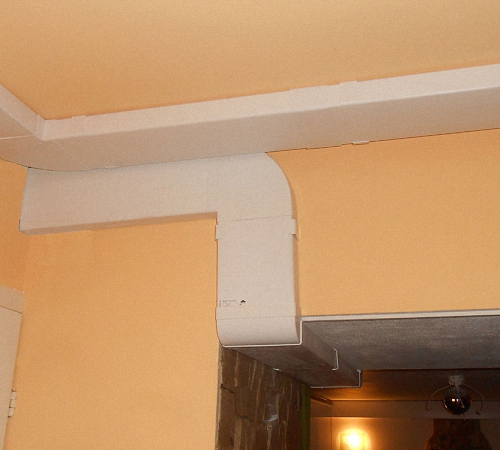
The presence of the hood is not the only option
Unlike other rooms, in the kitchen it is necessary to install not only a hood, but also equipment for airflow. In such cases, install the fans directly into the window. A more modern option are window or wall ventilators.
After all, there is such a thing as a balanced influx-extracting air from the kitchen. This means that if you blow air through a hood or a fan, then it must come from somewhere. When designing buildings, the natural scheme air exchange. And with the latest devices and energy-saving devices (sealed windows and doors), such a craving begins to disappear - hence the fungus through the windows and walls, the raised humidity level in the building and many other antipathetic surprises for the residents of the house. In any case, you can open the window, but this is not an option. In addition to the smells of your own kitchen get more dust and a lot of dirt from the street and draft.
The ventilator is a small overlay on the window (although there are also wall ones), letting a limited amount of air into the room. Usually consists of two parts:
- one external - an insect screen and a filter;
- the second is internal, equipped with an air adjustment valve.
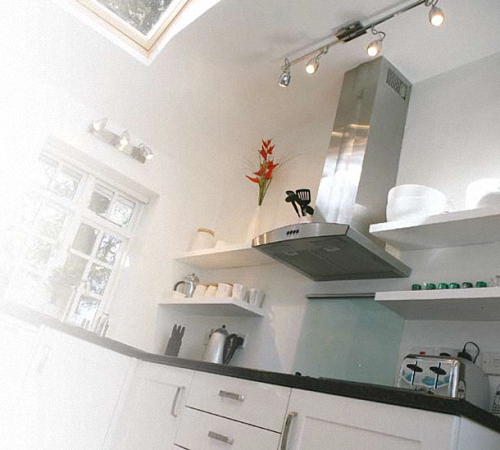
Can be with manual or automatic control. Mounted by installation in a plastic or wooden window to ensure airflow. The wall vent, as the name suggests, is mounted in the wall. This device is also equipped with a grille, a regulator, although there is a wall vent on solar battery, in which a small fan is mounted. These small devices will help to balance the microclimate in your kitchen.
Of course, the price of such devices will be much higher, but this will allow maintaining a certain microclimate in the room. When correct installation ventilation system, it will serve for many years and at the same time work effectively. A reasonable choice and professional installation of a specific ventilation scheme will safely and regularly remove contaminated air from the premises.
Often, while carrying out repairs in the apartment, especially in the kitchen, we pay great attention to beauty, comfort and comfort, while not forgetting the functionality of this room. But after all that has been done, sometimes, something prevents us from enjoying our creation, as if there is not enough air. It really is - there is not enough air.
The thing is that when we make repairs, we forget about the most basic, as far as kitchen space is concerned - the ventilation of the kitchen. The environment in this room, let's say straightforwardly, is not ideal. Here, not only changes in temperature and humidity, food is prepared here, during cooking, a large number of vapors are mixed, mixed with fats, oils, spices and other ().
Therefore, the kitchen should always be updated air, and it does not matter whether you cook in it or not. This, to our happiness, sanitary and hygienic rules and regulations, which we recommend you to take into account. Especially in the kitchen, all family members spend a fairly long period of time (especially the mistress).
Attention! If ventilation in the kitchen is working poorly or not at all, then it is likely that the aromas of cooking or heating food will be distributed throughout the apartment. Sometimes these aromas do not weathered for several days, which is not always pleasant.
What does ventilation consist of?
Let's start with the fact that in any apartment building there is already arranged ventilation system, the ventilation opening of which is located in the kitchen and in the toilet and bathroom. The construction of a house always involves the presence of a ventilation system, which must ensure sanitary and hygienic standards. But in the process of operating a house, this system is often clogged and works inefficiently. Therefore, there is a need to think about additional measures.
How can I check if the built-in ventilation system works well?
There are two options:
- Attach a piece of paper to the exhaust port. If it stuck to the grill, it means that the ventilation system in the kitchen works perfectly.
- You can bring a lighted match or a lighter to the hole. The flame of fire must be tightened inside the system. If this happens, then it works well.
All other options indicate that the ventilation works poorly or does not work at all. You can not clean yourself. The maximum that you can do is remove the ventilation grill in the kitchen and clear the channel by the length of the outstretched arm. But, as practice shows, this is the "dead poultice".
For cleaning, it is necessary to call specialists who work with special tools and equipment. True, the price of such a service will not be cheap, so management companies should deal with this. Surprisingly, very often the reason for the poor operation of the ventilation of the house is a bird's nest at the exit of the mine. After removing it, the problem is solved.
But there are different situations that affect the self-will of the tenants. For example, a neighbor could, in the process of replanning his own apartment, by ignorance, remove, as he thought, an "extra pipe". And all the apartments below were left without ventilation. In this case, we will all have to "press" on the neighbor so that he will restore everything ().
Nuances of the ventilation system
As you understand, ventilation for the kitchen - a necessary thing. But there is one point that concerns a completely different problem. In order for the air to flow out, it is necessary that it enter from somewhere. Cyclicality and circuit are the main criteria for the correct and effective operation of the entire system.
It's no secret that most of the tenants apartment buildings replaced the wooden windows with plastic ones. A good product with excellent physical, technical and operational characteristics. But the problem of plastic windows is that it is a sealed construction through which air does not enter the apartment. Circuit is absent.
Consequences of installing plastic windows:
- High constant humidity;
- Decrease in the amount of oxygen;
- Increase content carbon dioxide and radon;
- Colonies of microorganisms (mold, fungi) appear;
- The percentage of microbes increases.
And this is the effect on your precious health. Many may argue, they say, often ventilate the room. But this does not solve the whole problem. In addition, there is a possibility of a sharp decrease temperature conditions, which can lead to diseases (ARVI or ARI).
Solve the problem
Solve the problem
So how to solve this problem? There are several options:
- Install plastic windows, in which ventilation systems are "microvolve".
- Some manufacturers ventilation systems today they offer ventilation with recuperation (this is a forced scheme) in which air is not only circulated, exchanged, but also heated or cooled, purified and even passes through the ionization stage. True, such a system can only be installed in private homes.
Let us draw your attention to the fact that if the exhaust ventilation of your house, and accordingly your apartment, will work well, like a Swiss watch, it will still not be enough.
In the process of cooking, a huge amount of substances that are not very useful for our body are allocated. We will tell directly, both for furniture, and for facing of kitchen space these substances of any advantage do not bring. They must be removed (removed) from the kitchen. This will help good exhaust (the benefit of the current kinds of this device on the market in a large assortment).
Ventilation of the kitchen in a private house
Building your own private home covers a wide range of problems related to comfortable living in the future. And ventilation in this regard is not on the last positions. As it was said above, the best option This system for private buildings is a supply and exhaust technology. What is it?
Pay attention to the photo above. This is a scheme of the supply and exhaust system, where it is clearly visible how the air comes from the street, and how it is removed from the premises. Of course, this air exchange can not take place independently under the action of physical forces (as in exhaust), there is a need for equipment that will pump air into the interior. For this purpose, fans are used.
This indicates that this system is volatile. Is it good or bad? Of course, nobody needs additional expenses. Yes, and there is such an assembly is not cheap.
But all these shortcomings are fully covered by comfortable living conditions inside such a house. Neither you smell, nor you musty air (especially its shortage). In addition, it should be noted that this system is equipped with special filters that purify the supplied air. Plus installed heaters, which also warm it, when such a need suddenly appears (in winter).
What is most important in this equipment is that it is possible to direct cleaned and heated air to all rooms in the house. It is important to correctly create a scheme for the distribution of air ducts, installation work and correctly connect all parts of the system into a single technical complex.
As you can see in the photo, such an installation is usually placed in an attic space, so it does not take up space in the useful space of the house, there is no need to build a separate building or room, as, for example, for a boiler house.
Such an installation operates without noise, without vibrations, it practically does not require maintenance (once a year - prevention). The main thing is that this equipment is equipped with modern automation, which monitors the parameters of temperature and humidity inside the rooms, a small deviation and the mode of operation of the system immediately changes.
Types of supply and exhaust ventilation
At present, the manufacturing companies offer two technological schemes, which differ from each other by the scheme of heating the incoming air.
- With the help of special heaters. These can be water heaters or electric heaters.
- With the help of the recuperation system. What it is? This is when the air entering the house is heated by the air coming out, which has already gained a temperature inside the premises of the house. Excellent system, which does not require additional devices, coolants and energy carriers.
Regarding the method of recovery, it is necessary to make several additions. Many are interested in the question of how the outgoing air transmits its temperature to the incoming. The principle of temperature transfer is quite simple, for this purpose, special ducts, so to speak, a pipe in the pipe, are designed.
The internal pipe with small diameter moves the air from the street. And between the walls of a small pipe and a large air moves from the room. So two streams are separated by a thin metal wall inner tube, through which heat is transmitted. The most important thing is to create a tightness of air ducts and conduct their thermal insulation.
Conclusion on the topic
So, the efficiency of the ventilation system in the kitchen will depend on two main parameters:
- Does the ventilation shaft work well?
- Is there air exchange in the room?
If both criteria are met, then this is a guarantee that you will not have any ventilation problems. And at the end, as always, the video instruction is in you »width =» 640 "allowfullscreen =" »frameborder =" 0 "\u003e
If both criteria are met, then this is a guarantee that you will not have any ventilation problems. And in the end, as always, video instruction to help you.
Comments:
- The main types of kitchen ventilation
- General ventilation for kitchen
- Local ventilation for kitchen
- How is the required capacity calculated?
- Methods for testing the operation of the built-in ventilation system
- Ventilation for kitchen in private houses
- Types of supply and exhaust ventilation
- Nuances of proper ventilation for the kitchen
- Quality ventilation - a pledge of good health
Probably, you have repeatedly faced with the fact that there is a foreign odor in the entrance of your house or even in your apartment. This means that in this house ventilation is either absent or in a very poor state.
The kitchen in your apartment (or house) is the record holder for the production of various smells. Due to the constant preparation of food, cooking, hot and other gastronomic processes, a lot of burning, heat and steam are released into the air. Therefore, it is necessary to have ventilation in the kitchen.
It will provide you and your home with special protection, because breathing clean air is extremely important. Since natural ventilation for the kitchen does not cope with the rapid elimination of odors, you need to make sure that air exchange increases by artificial means.
The main types of kitchen ventilation
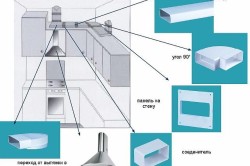
If in your kitchen there is only one vent, then this is a serious omission of builders and designers. By all rules, there should be two such holes. But also the search for "unoccupied" ventilation ducts is also undesirable, because they can already be muffled from above or they can be used by your neighbors from the bottom.
This will lead to the fact that you just add another source of extraneous odors to your apartment. Since it was already mentioned about the drawbacks of natural traction, it is worth noting that it makes sense to connect additional exhaust devices to the ventilation ducts.
Back to contents
General ventilation for kitchen
Directly into the duct is installed a fan for conventional extraction. In order for it to work, it is simply necessary to additionally put a switch and provide the device with a wire for turning on / off. Among the standard sizes of nozzles for such a fan are 100, 125, 150 mm. You will need to prepare a special hole for its diameter. When all the finishing work is finished, a fan is installed and connected.
Back to contents
Local ventilation for kitchen
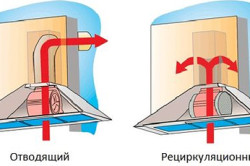
Such ventilation is extremely appropriate in the main cooking zone and the accumulation of all kinds of odors and various substances. A special device is called - cooker hood. By design, the hoods are classified as follows:
- Built-in (or built-in) hoods are perfectly combined with any kitchen furniture and fit all the interiors. Can be installed even inside the table (although usually in some of the hinged cabinets). The connecting pipe easily hides in the furniture, if suddenly the axis of the hood installation does not coincide with the vent.
- Standard (flat) hoods are suspended structures that you secure between a wall cabinet and a cooker.
- Angular (with fixation in the corners) hood.
- Wall hoods require installation on a wall, directly above the stove. You will find a huge selection of a wide variety of design proposals of this type.
- Island hoods are attached to the ceiling. Their main advantage is free use in all rooms. Most often they are installed in the kitchen with an island.
All except the built-in hood are of the type outdoor installation. By design features there is a wide variety of shapes: telescopic, dome, inclined, retractable and many others. Classic design - it's dome devices, more advanced version - vertical or inclined. But the principle of their work is common.
Housing (with engine and exhaust hood) is located below, and the tube, covered with a decorative casing, goes up. Therefore, in the case of installing such structures, the ventilation hole and the extraction axis must coincide.

It is not necessary to say that it often does not happen in kitchens, because the stove is located somewhere in the middle of the room, and the exhaust duct is located somewhere in the corner. To hide the pipe connection, you can make a special gypsum cardboard box on the ceiling, because hide it in the wall will not work.
You can also highlight a small classification by how devices work. They are either flowing or circulating. The former are considered more effective. They absorb odors and remove polluted air through the shaft (air duct).
For the operation of the circulation hoods, special carbon filters are required. Through them, and will be skipped and cleaned the air. There is one nuance here. At least once every six months, you need to change these filters, because the quality of the device depends on their quality.
Regardless of which model you choose, the main thing is that the hood functions correctly and qualitatively cope with its tasks, providing ventilation fully. To do this, it is worth considering that you need to carefully select the device by calculating it correct power, then install it, following all the rules and regulations of SNiP.
Back to contents
How is the required capacity calculated?
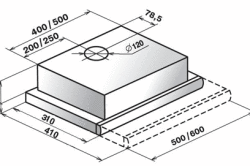
If it is wrong to calculate the power of the future hood, it is unlikely that the ventilation for the kitchen will be fully and efficiently operated. Here everything depends on the size of the room. There is a definite calculation formula, which is necessarily useful when planning ventilation in your kitchen. Here's how it looks:
P (which means power) = S (referring to the area of your room) * H (multiply by height) * 12.
Experts advise adding 30% of the top to the final figure. So you get more objective indicators. It is worth making a small correction to the fact that the power is lost due to the curvilinear shapes of the air ducts.
Another thing worth paying attention to the permissible noise level. Remember that the limit is 50 dB. Anything higher will become an additional source of discomfort for you. Carefully study everything specifications before choosing the hood.
Back to contents
Methods for testing the operation of the built-in ventilation system
Do not forget: you need to have well-functioning and natural kitchen ventilation in addition to additional devices. How can this be verified?

- You can attach a paper sheet to the opening of the hood. It must adhere to the ventilation grille. This means that there are no complaints about ventilation.
- There is another option. Bring a lighted match there. You should see that the system draws the flame inside. This will be an indicator of its proper operation.
Otherwise, the ventilation of the kitchen is in a sorry state. You can try to remove the ventilation grille yourself and clean the channel - this can be done for the length of the outstretched arm. You will not receive a special result. You can refer to special services, whose representatives have necessary equipment and tools. Although it is very expensive.
It is possible to address still in housing and communal services or other management company, which is responsible for the safety and integrity of your home. Sometimes it happens that at the outlet of the pipe there is a bird's nest or other unpleasant details that can affect the operation of your ventilation. Also, improper work can be facilitated by negligent neighbors who, during the repair and redevelopment of their apartment, inadvertently removed the "extra pipe".
Back to contents
Ventilation for kitchen in private houses
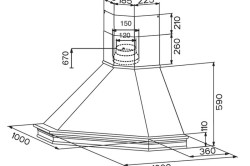
The optimal system for ventilation of buildings of a private type is the supply and exhaust. The scheme of its work is that special equipment is used that pushes the air received from the street into the internal premises and then takes it out. This system from the category of energy-dependent, it is quite expensive. But there are a lot of pluses. For example, a complete lack of odors and musty air.
Special filters constantly clean the air, which comes from the street. And there is the presence of air heaters to heat it if necessary. Already cleaned and heated, you can direct air to any room in your home. The main thing - correct installation on a clear scheme for the distribution of air ducts and the correct connection of all components of the system.
In the equipment there is an automatic mode. Without outside interference, the system monitors both humidity and temperature in each room. If there are any deviations, the mode changes. At its work there is no vibration, no noise.
Comments:
For kitchens air ducts can be made of galvanized steel or special plastic. Their cross-section is rectangular or round. The first option is more preferable, although its cost is higher. It is much easier to take care of such pipes, they are distinguished by their high strength and safety. Among the reliable options for installing ventilation systems, it is necessary to note the steel corrugated pipes, which are resistant even to high temperatures. Channels perfectly withstand the temperature rise up to 900 ° C.
In a private house in the kitchen only metal ducts are put, this condition can not be violated. For an apartment building in the city, air ducts made of bricks or sheet metal are planned already during construction, so plastic can be used for the supply.
There are numerous options for special plastic pipes, differing fire safety, which can be used for outdoor installation.
When choosing a focus, it is necessary to give noise insulation, as the rattling hood of comfort in use will not add.
When installing the ventilation system, attention should be given to filtration. All air cleaners are equipped with filters that perform a variety of functions. This allows not only to perfectly clean the air in the room, but also to avoid a large amount of fat deposits on the internal surfaces of the air ducts. Most often, special metal or foil grilles are used for exhaust ventilation systems. They are easily removed, cleaned detergent selected type (it is recommended to take sparing compositions). Many grids are designed to be washed in a dishwasher, this only facilitates the care.



